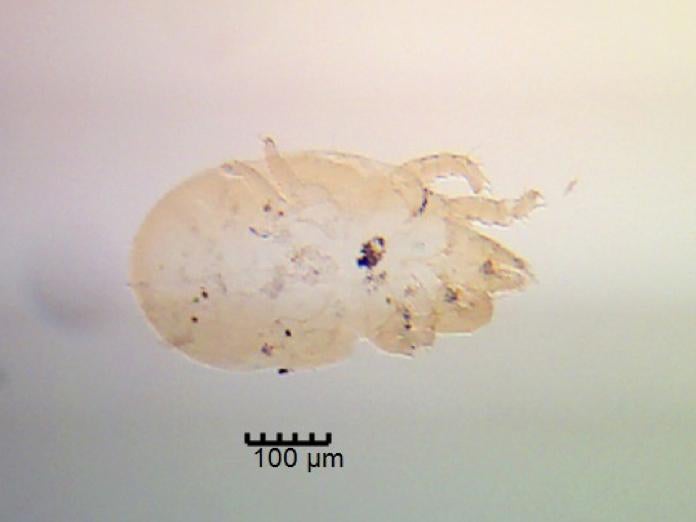Mites found on stolen bank notes help forensic experts locate massive stash of buried money
'We could be using these microscopic animals to recover cash, drugs or even corpses'

Your support helps us to tell the story
From reproductive rights to climate change to Big Tech, The Independent is on the ground when the story is developing. Whether it's investigating the financials of Elon Musk's pro-Trump PAC or producing our latest documentary, 'The A Word', which shines a light on the American women fighting for reproductive rights, we know how important it is to parse out the facts from the messaging.
At such a critical moment in US history, we need reporters on the ground. Your donation allows us to keep sending journalists to speak to both sides of the story.
The Independent is trusted by Americans across the entire political spectrum. And unlike many other quality news outlets, we choose not to lock Americans out of our reporting and analysis with paywalls. We believe quality journalism should be available to everyone, paid for by those who can afford it.
Your support makes all the difference.Tiny creatures living on the bank notes have helped experts locate stolen money buried in a secret location underground.
In 2016 a criminal gang in Germany made off with at least half a million euros, which they took abroad and buried for safe keeping.
When police caught one of the perpetrators carrying a portion of the money in plastic-wrapped €500 banknotes, the thief claimed the rest was hidden somewhere in Spain.
However, forensic analysis of microscopic mites found on the money allowed the investigators to pinpoint the real location of the loot – on the other side of the globe in Thailand.
After confiscating the money and processing it at a bank, the police handed it over to the German Forensic Institute for further examination.
Most of the notes were discoloured and partially destroyed,even thought they were kept in plastic bags. Among them scientists examining the evidence found dozens of dead Rhizoglyphus howensis Manson mites.
This discovery aroused the suspicions of the experts who examined them, as this species is not only never found in Europe, it is typically seen feeding on seeds of palm trees in the Australasia region.
Initially, the scientists thought the mites must have colonised the notes when the suspects travelled to Australia or New Zealand, but the size of the colony indicated they had infested the bank notes while they were buried underground.
Moisture that made its way into the plastic bags containing the money while in the soil allowed the growth of fungi that provided the optimum feeding conditions for the tiny creatures.
Following the lead of the mites, the scientists had successfully established that not only was the rest of the loot buried underground, the culprit was not telling the truth about its location.
In a later confession to the police, they revealed the truth – the money was buried in Thailand, a statement that this time could be verified by the findings from the forensic team.
Mite specialist Professor Alejandra Perotti of the University of Reading, who co-authored the report documenting the case, said they had demonstrated that mites “can be big players in investigations into high-profile crimes”.
“This case highlights the importance of carefully identifying and preserving minute organisms found at crime scenes, something which until now has been overlooked by investigators or police," she said.
Although the scientists had managed to identify around 30 mites from the notes, they noted that if the money had not gone through the process of sorting at the bank they likely would have found more evidence.
The results of their study were published in the journal Forensic Science International. The study's authors said they could not reveal where the money had been stolen, or the full amount, due to an agreement with the German authorities.
Medjedline Hani, a PhD student in Professor Perotti's lab who conducted most of the research, said that while soil is commonly used in forensic analysis, mites and other creatures were often overlooked.
“The distinctive biological traits of organisms within the soil make them an untapped area that could offer vital clues,” she said.
Professor Perotti added their techniques had all sorts of potential applications.
“We could be using these microscopic animals to recover cash, drugs or even corpses, which are often buried by criminal gangs to hide evidence or be retrieved later,” she said. “This breakthrough was made possible by the work of a talented scientist who fully dedicate their research to unravel these mysteries.”